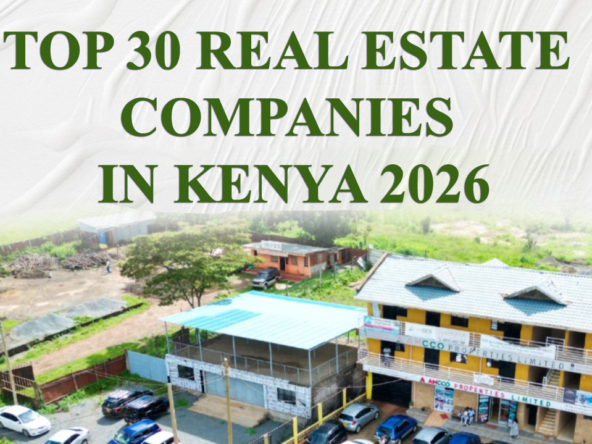Introduction
Stay ahead of the curve with our expert breakdown of the Kenya property market outlook for 2025. Whether you’re a first-time buyer, seasoned investor, or part of the diaspora, this guide explores the market dynamics you need to know. The real estate sector in Kenya continues to show resilience, with infrastructure growth, urban migration and a rising middle class driving demand.
Market Overview
A combination of major infrastructure projects, record diaspora remittances and government housing incentives are fuelling growth. The Central Bank of Kenya reports a 9% year‑on‑year increase in mortgage uptake, reflecting heightened buyer confidence and an expanding middle-income bracket. Nairobi’s suburbs, once considered peripheral, are now fronts for significant development, catalysed by improved road networks and public transport schemes.
Infrastructure Boost
- Nairobi Expressway & Konza Technopolis: Reduced commute times have opened up Kitengela, Ruiru and Syokimau as desirable residential zones for Nairobi workers who seek more affordable housing.
- LAPSSET Corridor: New ports and rail links in Lamu are spurring coastal developments like Dongo Kundu, offering both residential and commercial investment avenues. Bus Rapid Transit (BRT) projects are further integrating satellite towns, reducing travel time by up to 50% during peak hours.
Public-private partnerships (PPPs) are playing a critical role in delivering large-scale housing. With the government targeting to construct 250,000 new units annually under the Affordable Housing Programme, developers aligned with these PPPs have seen reduced land acquisition costs and favourable tax incentives.
Diaspora Influence
Remittances reached a record USD 4.5 billion in 2024, according to the Central Bank of Kenya. This influx of foreign capital has translated into robust demand for gated communities, off‑plan properties, and high-end serviced apartments in Nairobi, Mombasa, and Kisumu.
Platforms like BuyRentKenya have simplified overseas investment through virtual property tours, blockchain‑enabled title verification, and escrow services. Diaspora buyers increasingly favour turnkey investments that guarantee rental management, capital preservation, and compliance with Kenyan land laws. Trends indicate a 20% increase in diaspora‑led pre‑launch sales for developments in premium areas such as Parklands and Kileleshwa.
Affordable Housing & Urbanisation
Government‑led projects under the Affordable Housing Programme have mobilised both private and institutional investors. ABTs (Alternative Building Technologies) such as precast concrete panels and insulated panels are reducing build times by 30% and lowering unit costs by up to 25%. Developments in Athi River, Ruaka, and along the Thika Superhighway are pioneering these methods, offering two‑bed apartments from as low as KES 4 million.
Urbanisation pressures are also reshaping land use. City planners in Nairobi and Mombasa are advocating mixed‑use high‑density developments to counter urban sprawl. Vertical living—towers above four storeys—is increasingly permitted in formerly low‑rise zones, boosting land‑use efficiency and rental yield potential.
Investment Opportunities in 2025
Kenya’s real estate market in 2025 offers diverse opportunities across asset classes:
- Apartments for Sale in Parklands by Gazebo Homes Ltd: Modern 2–3‑bed units with contemporary finishes, proximity to Aga Khan Hospital, high rental yield (~8% annually), and strong capital appreciation forecasts.
- Mixed‑Use Developments: Westlands and Upper Hill combined residential, retail, and office podiums appeal to young professionals seeking live-work-play environments.
- Peri‑urban Land: Joska, Juja, and Isinya plots remain affordable (KES 1M–3M for 0.1 acre) with infrastructure upgrades raising land values by 15% year‑on‑year.
- Coastal Vacation Homes: Diani and Watamu Airbnb‑friendly properties have seen occupancy rates rebound to 65% post-pandemic, driven by domestic tourism and regional conferences.
- Commercial Real Estate: Logistics parks in Kisumu, Nakuru, and Eldoret have vacancy rates below 10%, attracting warehousing, cold storage, and last‑mile delivery firms.
Risks and Mitigation
Potential risks persist:
- High Interest Rates: Home loans range 12–16%; developers offer early-payment incentives to mitigate financing costs.
- Land Fraud: Title verification through county land registries and blockchain platforms reduces disputes.
- Regulatory Delays: Title transfers can take 4–8 weeks; engaging reputable law firms speeds up due diligence.
- Off‑plan Quality: Independent valuations and progress oversight by quantity surveyors safeguard against substandard finishes.
Investors should maintain a diversified portfolio—mixing high‑yield apartments, secure land holdings, and commercial leases—to balance returns and liquidity.
Infrastructure, technology, and financing converge to make 2025 a watershed year for Kenyan real estate. Whether you’re acquiring your first home, expanding a rental portfolio, or pursuing commercial ventures, there are opportunities across the market spectrum.
Contact maploti.com to schedule property viewings, access exclusive pre‑launch deals, or consult with our network of vetted agents.




